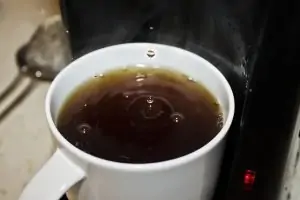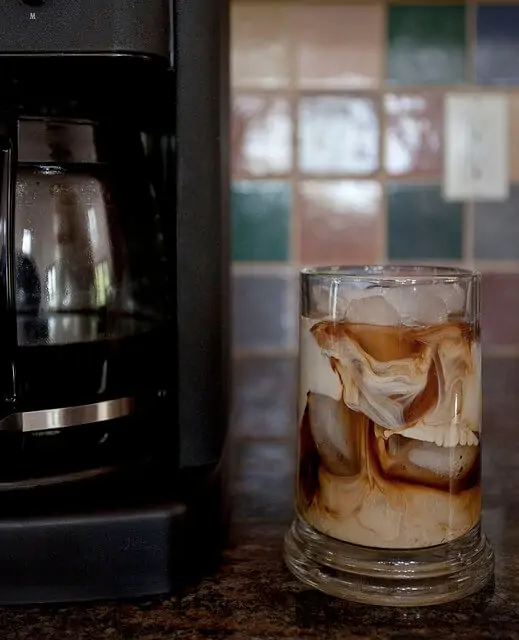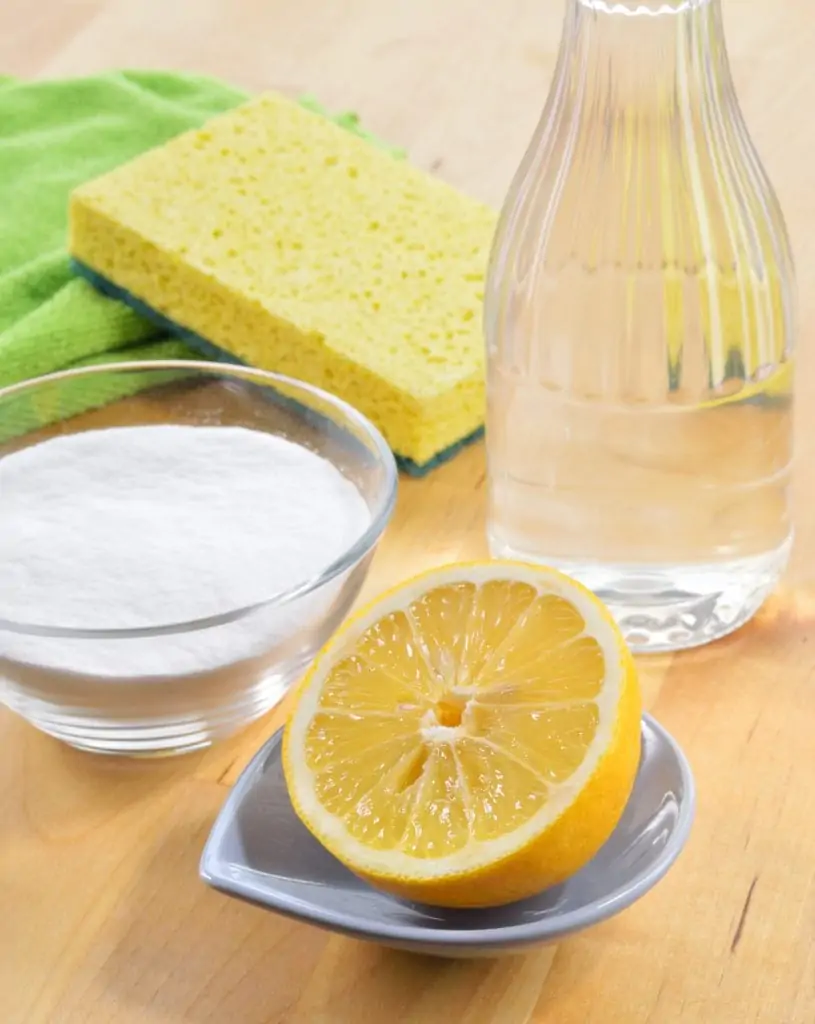
Coffee makers are pretty much a staple in every kitchen. They are also one of the most neglected, at least in terms of cleaning and maintenance. Apart from replacing the paper filter and maybe rinsing the carafe, when was the last time you cleaned it in its entirety?
Bleach is the best cleaning agent to clean a coffee maker to get rid of all the gunk and residue buildup. And, yes, it is toxic. That is, it’s toxic if you don’t know how much of it to use and the right process to rinse it completely from your coffee maker.
There are safer ways to clean your coffee maker that are as effective as bleach. These include baking soda, vinegar, and lemon. Vinegar, for one, is just as cheap and convenient as bleach, which makes it a popular choice as well.
Then there are the commercial coffee maker cleaners that are easy-to-use and pretty much do away with measuring and mixing to make a cleaning solution. Their downside, of course, is they’re more expensive than the other methods that use cupboard staples.
If you want to continue to feed your coffee addiction, read on to know how to clean your coffee maker the safe way. Even if you have to use bleach.
Why Do I Need to Clean my Coffee Maker?
You may not know it, but the coffee maker is actually where a plethora of germs are found in your home. The moist environment of the leftover coffee grounds provides an environment in which bacteria, yeasts, and molds can grow and thrive.
These organisms can cause allergic reactions, or worse, diseases and infections. Although this is a major concern and should be enough reason to clean your coffee maker, it’s not the only one.

Have you noticed how your coffee has been tasting like a bitter brew? That’s just one of the signs that it’s past time to clean your coffee maker, as coffee residue and water mineral deposits have already built up in your coffee machine. This build-up has already affected its drip operation and, therefore, the taste of your coffee.
You should clean your coffee maker after every use. Remove the grounds and wash the brew basket, lid, and coffee pot. Removing the mineral deposits requires deep cleaning and descaling. This should be done at least every three months.
However, if you have hard water that’s heavy with mineral content, it’s probably best to clean the coffee maker at least monthly. This is because hard water causes residue to build up more quickly.
Looking for a coffee maker with a carafe that keeps your coffee hot?
Is It Safe to Use Bleach to Clean My Coffee Maker?
Dish soap and hot water cannot easily clean mineral buildup, especially if it’s been sitting in the coffee maker for a while. Neither can it wash away the mold and other microorganisms that are present.
It may be time to use bleach to clean your coffee maker. Bleach is tough enough to handle the stubborn buildup that your dishwashing soap simply can not.
I know, I know: it’s been said that it isn’t a good idea to use bleach to clean your coffee maker as it’s a harsh chemical unsafe for human consumption. Without proper rinsing, the residue can end up in your cup of coffee. You’ll also be running the risk of the bleach causing damage to the brewing mechanism.
However, bleach is unbeatable when it comes to cleaning, mainly because of its sterilizing abilities. You need to proceed with caution when you use bleach to clean your coffee maker, though.
There are steps you can take to lessen, if not totally eliminate, the negative effects of bleach. Never run the bleach directly into the coffee maker. Instead, dilute the bleach by mixing a tablespoon into a gallon of hot water.
To ensure that you get rid of the remaining bleach in the coffee machine, run three or four pots of water through it before making your next brew.
A final note: bleach is very versatile and can be used to clean anything from your coffee pot to your drains—though be sure to use the correct dilution ratio. Follow all instructions listed by the manufacturer whenever you clean with bleach, and never mix bleach with ammonia.
How to Clean a Coffee Maker with Bleach
If your coffee maker is so dirty that you’re left with no choice but to try bleach to clean it, make sure to follow these steps. I would like to remind you that using bleach to clean your coffee maker is more of an attempt to restore it. This method should not be used as your regular cleaning method.
You will need:
- 1 tablespoon bleach
- 1 gallon of water for the bleach solution
- 4 gallons of clean hot water
Directions:
- Mix the bleach and water. Do not put bleach directly into the coffee maker. The most bleach you can use is 1 tablespoon of bleach to one gallon of water. Never use more than that.
- Fill the water reservoir with the solution and let the coffee machine fully run through its course. Make the solution also fill the coffee pot so it can get fully cleaned as well.
- Turn off the coffee maker once the coffee pot fills up with the solution. Pour out the mixture from the pot. Don’t let the solution sit on the pot for too long. You don’t want it to sit on the heating plate, either.
- Use up the full gallon of solution in the coffee machine. It may take several runs, depending on the size and model of your coffee machine.
- Get a gallon of hot, clean water. Run this through your coffee maker. Using hot water will cut down the time to get the water boiling in the cycle. Repeat this process until you’ve run at least 4 gallons of hot water through the coffee maker to completely get rid of bleach residue. You can run it even more, if you wish.
- Air dry the coffee maker upside down for one day under the sun or several days on the countertop. If there is still any bleach residue remaining, it will turn to white specks. You may want to run hot water through your machine again if you see any.

Alternative: How to Clean a Coffee Maker with Vinegar
Vinegar is a safer alternative to bleach. It’s popular to use in cleaning practically anything! It’s food-safe, gentle, and won’t corrode your coffee maker. It is also said to be able to kill 82 percent of all mold species.
You will need:
- 1 part distilled white vinegar
- 1 part warm water
- Sponge
Directions:
- Mix equal parts white vinegar and warm water. Make enough solution to fill the water reservoir of your coffee machine. Pour it directly into the carafe.
- Press the brew button. Turn off the machine halfway through the cycle. If your coffee maker has a clean cycle, use it instead. It will start and stop by itself and lets different parts of the machine soak in the vinegar solution.
- Let the coffee maker sit from thirty minutes to one hour and let the vinegar solution work its magic on the mold and mineral buildup in the coffee machine.
- Turn on the brew function again after the allotted soaking time. Finish the brewing cycle of the coffee maker.
- When done, pour the vinegar solution down the drain of your sink. Do not worry if there is still some residue of the vinegar solution left in the coffee maker.
- Rinse the coffee pot thoroughly with warm water and soap. Use a sponge to scrub it. Pour out the soapy water. Continue rinsing with clean water until all the soap bubbles have been washed out.
- Fill the coffee pot with fresh water. Press the brew button to run a complete cycle. Pour out the water and then refill the coffee pot with water. Repeat the brew cycle two more times. Remember to pour out the water and refill after each cycle. The coffee maker needs to cool down between cycles for three to five minutes.
Alternative: How to Clean a Coffee Maker with Baking Soda
Another natural yet effective way to clean your coffee maker is using baking soda. It is naturally abrasive but gentler than other cleaners. Baking soda can scrub off stains that have built up and is great in eliminating odors.
You will need:
- ¼ cup of baking soda
- Warm water
- Sponge
Directions:
- Fill the coffee pot with warm water. Add the baking soda directly into it. Mix with a spoon to completely dissolve the baking soda.
- Pour the baking soda solution into the water reservoir. Be sure that there is no coffee filter in the machine. Put the coffee pot back in its place.
- Turn on the coffee maker and run the solution through the full brewing cycle. Once finished, pour the hot baking soda solution back into the water reservoir and repeat the process two more times.
- When done, clean the inside of the coffee pot with a sponge while the baking soda solution is still inside. It will remove the brown coffee stains faster.
- Pour the dirty water down the kitchen sink, rinse the carafe, and fill it with fresh water. Run it through the coffee maker one last time.

Alternative: How to Clean a Coffee Maker with Lemon Juice
Like vinegar, lemon is an excellent cleaning agent. Due to its acids, a lemon has both antibacterial and antiseptic properties. It also acts as a natural bleach. However, it is not a disinfectant and is definitely not a good substitute for bleach in removing bacteria that may be present in your coffee maker.
You will need:
- 1 tablespoon to ½ cup of lemon juice
- One pot of water
- Coffee filter
- Mild dish soap
Directions:
- Run a full cycle of cold water only to rinse out as much coffee residue as possible. Turn off the coffee maker.
- Mix a half cup of lemon juice with a half cup of water. Pour the solution into the reservoir and let it stand from 15 to 20 minutes. This step is necessary to break down residue that may be found inside the reservoir.
- Put a clean and empty coffee filter in the basket. Turn on the coffee maker and run a cycle with lemon water. This is to break down the mineral deposits throughout the system.
- Throw out the lemon water. Run one or two cycles as needed with just fresh water (no lemon added) to thoroughly wash out the lemon solution.
- Wash all the removable parts such as the coffee pot with mild dish soap. Rinse very well with water.
Alternative: How to Clean a Coffee Maker with a Commercial Coffee Maker Cleaner
The previous methods to clean a coffee maker have been proven to be effective and inexpensive. However, they can leave an odor in your coffee machine or a lingering taste in your coffee if they are not flushed out correctly after cleaning.
This is why you should consider purchasing a commercial coffee maker cleaner to do the job. Although a commercial cleaner will still require running a few cycles before your machine is completely clean, most are odorless and won’t leave a bad taste in your brew.
There are two kinds of commercial cleaners. One is a “cleaner” that will remove coffee residue in your coffee machine. The other is a “descaler” that’s used to get rid of mineral build-up, such as calcium and lime, from the water. Both are usually compatible with all types of espresso and coffee machines.
You will need:
- 4 ounces commercial coffee maker cleaner
- Water
Directions:
- Pour the water reservoir with 4 ounces of the cleaner. Fill the rest of the reservoir with water. Run a full brewing cycle.
- Empty the water in the coffee pot into the kitchen sink. Then, with the power on, let the coffee pot sit idle for 30 minutes.
- Run two more full reservoirs of plain water (without the cleaner).
Affresh W10355052 Coffee Maker Cleaner, 3 Tablets
One brand of commercial coffee maker cleaner is Affresh. It is specially formulated to keep your coffee maker clean so you can enjoy great tasting coffee.
It is effective in descaling your coffee maker of mineral buildup that has increased over time. It is easy to use without any need for measuring, mixing, or stirring.
You will need:
- 1 tablet of Affresh Coffee Maker Cleaner
- Fresh water (as needed)
Directions for multi-cup coffee makers:
- Fill the water reservoir with water to its maximum level. Drop 1 tablet of Affresh into the reservoir.
- Run one brew cycle into the carafe. Use the clean cycle if your coffee maker has this function.
- Discard the water from the carafe. Fill the reservoir with plain water to its maximum level.
- Run one brew cycle. Pour out the water to rinse the coffee maker.
Directions for single-cup coffee makers:
- Fill the water reservoir with water to its maximum level. Drop 1 tablet of Affresh into the reservoir.
- Select the largest cup size and run two brew cycles. Discard the water in between the two brew cycles.
- Discard the remaining water from the reservoir and fill it again with water to its maximum level.
- Run two brew cycles and discard the used water to rinse the coffee maker.
Coffee Time!
If you notice your morning coffee tasting bitter, it could be its way of telling you it’s time to clean your coffee machine. Each time you use it to filter coffee, it accumulates residue that builds up dramatically over time.
Worse than this, your coffee maker may already be housing bacteria, yeast, and mold. These elements may get into your cup of coffee through a brew cycle and make you sick.
Deep cleaning your coffee maker at least once every three months is necessary if you want it to work at its best, to prevent bacteria, and to keep your coffee tasting great.
If properly used, household bleach can be the best cleaning agent to restore your neglected coffee maker. It is not, however, to be used in your regular coffee machine cleaning routine.
There are safer cleaning methods that are just effective, such as baking soda, vinegar, and lemon. Then there are the commercial coffee maker cleaners that are specially formulated to clean and descale your machines. What’s more, they keep your cup of joe taste good without the lingering vinegar smell and taste. Whichever methods you choose, make sure to follow all directions to ensure a great cup of coffee tomorrow morning.
Frequently Asked Questions
Is it safe to use bleach to clean a coffee maker?
The answer is yes and no. The coffee maker is used to make something that you take in your mouth and bleach is known to be toxic for ingestion. There may also be some coffee makers that can sustain some damage when cleaned with bleach.
Having said that, bleach is a good germicidal, unlike other cleaning agents. If you want to get rid of the bacteria, fungi, and molds that may be housed in your coffee maker, bleach is very effective.
So, if you want to go ahead and use bleach, use it correctly. Dilute it heavily and learn how to effectively flush it out from your coffee machine.
How do you remove calcium deposits from a coffee maker?
The white buildup that clogs your coffee maker and gives your coffee a bitter taste is the deposit of calcium, magnesium, and other minerals that are commonly found in water.
There are commercial coffee maker cleaners that can effectively remove calcium deposits. But, you can use something that is just as effective and you surely have on hand – white vinegar.
To use, brew equal parts vinegar and water using a clean coffee filter. Turn off the coffee machine halfway through the brewing cycle and let it sit for at least thirty minutes.
Turn the coffee maker on to finish brewing. When done, replace the coffee filter. Then, run two cycles with fresh water to rinse.
How do I make my own descaling solution?
There are two descaling agents that you can use to make a DIY descaling solution. These are vinegar and citric acid.
To make a vinegar descaling solution, simply mix equal parts of vinegar and water.
The downside of the vinegar descaling solution is that it takes so long to rinse out of the coffee maker. If not done well, you can have a vinegar taste and smell in your brew.
The citric acid solution takes much less time to rinse out since it is odorless. To make, mix 1.5 to 2 tablespoons of citric acid with one liter of warm water. Stir to completely dissolve the citric powder.
Typically, it takes just 2 brewing cycles of fresh water to completely rinse out the citric solution. And, your next brew after descaling will taste great.
What is the best way to clean the inside of a coffee maker?
Start by filling the water reservoir with equal parts white vinegar and water. You can increase the amount of vinegar that you put if your coffee maker has a pretty bad buildup.
Place a clean coffee filter in the basket and start the machine. At the halfway point, turn it off. Let the vinegar solution sit in the reservoir and carafe for at least 30 minutes. How long you will let the solution soak will depend on how much buildup you need to get rid of.
Turn on the coffee maker and complete the brewing cycle. Then, discard the dirty coffee filter and the vinegar solution.
To flush off the vinegar smell and taste, fill the reservoir with fresh water and put a new filter in the basket. Turn the coffee maker on for two brewing cycles. Replace the filter and refill the fresh water in between cycles.
After the second cycle, wipe your coffee maker and carafe with a clean cloth.
Does vinegar clean mold?
An effective way to clean your coffee maker of mold is vinegar. Aside from its sanitizing properties, it can also decalcify or remove the mineral buildup caused by hard water.
Many coffee makers have mold and yeast growing in their water reservoirs. They may also contain bacteria. The moist environment of coffee maker reservoirs is perfect for mold and bacteria to grow in numbers.
Hot water alone will not be enough to get rid of the organisms. Your best bet would be bleach but you may have safety concerns in using it on your coffee maker. That leaves vinegar the next best thing to use.
What happens if you don’t descale your coffee maker?
Descaling is the cleaning process that removes the buildup of calcium and limescale. The latter is a hard, off-white, chalky deposit found in your coffee maker that can affect its drip operation.
Calcium and limescale are not toxic but their buildup can affect the quality of your brew. Water in the reservoir may not reach the optimal brewing brew due to limescale buildup insulating it from the heat source.
As a result, the full flavor of the coffee beans will not be extracted. Also, your coffee may not be as hot as you would like it to be.
Limescale buildup can also disrupt the drip operation of your coffee maker. It can cause it to work harder and ultimately, its breakdown.
Additional Resources
- Eat This, Not That: How Often to Clean a Coffee Maker
- YouTube: How to Clean a Keurig in Less than 5 Minutes
Image credit via Flickr Creative Commons: Manav S. and Roger G.

